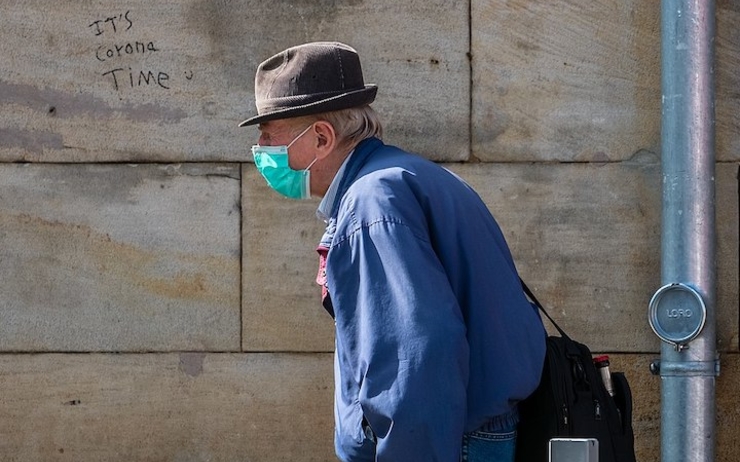
[ad_1]
As reported by the EFE agency, researchers from the Universitat Politècnica de València (UPV) and the Higher Council for Scientific Research (CSIC) predict a spike in the number of COVID-19 infections by the end of November in Spain. The number of hospitalizations will continue to increase until the first week of December and the number of deaths until the beginning of 2021.
The researchers carried out a simulation that takes into account the early use of antivirals against COVID-19, imagining their distribution in pharmacies, to measure their impact on the evolution of the pandemic in Spain.
The results of this simulation, published in the journal Chaos, Solitons & Fractals, conclude that antivirals would help significantly reduce the incidence of the virus and prevent the collapse of the health system.
Antivirals to prevent transmission
“Until an effective vaccine is found, it is necessary to continue to strictly adhere to safety measures. But the use of appropriate antivirals could be a good option to relieve symptoms, control their severity and prevent disease. Transmission.”explains José María Benlloch, CSIC research professor and director of the Institute of Instrumentation for Molecular Imaging (I3M), a center associated with the Polytechnic University of Valencia and the CSIC.
In their study, the researchers developed a random network model to analyze the transmission dynamics of COVID-19 in Spain. They then applied this modeling to various scenarios where effective, accessible and inexpensive antivirals would be available.
“Fortunately, there are many antiviral candidates identified by various research groups around the world who could meet what we have called democratic conditions and which would offer universal access to these drugs.“says Benlloch.
These researchers then analyzed the evolution of the pandemic curve according to four different scenarios.
In the first scenario, the incidence of the virus is analyzed in the absence of a universal antiviral, which corresponds to the current situation. Modeling the current situation predicts that the number of infections will continue to rise in November, peaking towards the end of this month. Admissions will continue to increase until early December and deaths until early 2021.
“We carried out these simulations in June and, unfortunately, reality confirms the results we had obtained”explains Rafael Villanueva, a researcher at the Institute of Multidisciplinary Mathematics (IMM) of the Polytechnic University of Valencia.
If the trend continues and is confirmed, the modeling data is “disturbing” warns Villanueva, who asks “everyone’s responsibility” take measures to avoid reaching these figures.
Different scenarios
In their study, the UPV and CSIC team of researchers also simulated the incidence of the virus, this time with antivirals available, at different dates and with different transmission rates.
The first scenario foresees a low percentage of people with symptoms (15%) with reduced efficacy of the antiviral (35%). However, the modeling shows a significant reduction (by more than 50%) of people admitted to hospital in the event of pandemic peaks. Furthermore, if the effectiveness of the antiviral significantly reduces the number of hospitalizations according to the study, it also delays the peak by about 15 days and therefore the saturation of the health system.
In the second scenario, increasing the transmission rate reduces the effect of antivirals, with an increased risk of hospital saturation. In the third scenario, the researchers envision the availability of antivirals in the short term.“In the latter case, modeling allows us to verify as soon as possible the importance of having antivirals available in the pharmacy, because any delay can reduce their impact, or even lead to a loss of efficacy”, reports Benlloch.
Modeling carried out at IMM-UPV shows that the use of effective antivirals would help reduce the impact in terms of health care and human lives. Concludes that by using low-efficacy antivirals and communicating disease at a reduced rate of “Contact people”, it would be possible to obtain a significant reduction in the number of hospitalizations, thus helping to avoid greater saturation of the public health system.
“One of the most important conclusions we come to is that any action taken against COVID-19 will be part of the fight against this virus. Our modeling predicts that what we call a democratic and universal antiviral is a valuable tool to reduce the incidence of this pandemic. “, indicate Villanueva.
Benefits of Vitamin D.
CSIC researcher José María Benlloch also points out the importance of immunomodulators such as vitamin D, which he says “they could have the same effect as direct antivirals, thus helping to rapidly lower the viral load of all infected people, stopping the chain of infections and thus reducing the peak of the second wave”.
According to Benlloch, the Reina Sofía de Córdoba hospital has already carried out a pilot clinical trial with vitamin D “very encouraging in this sense” where does that appear“It might be very wise to increase the vitamin D levels of the entire Spanish population”.
Source: EFE
[ad_2]
Source link